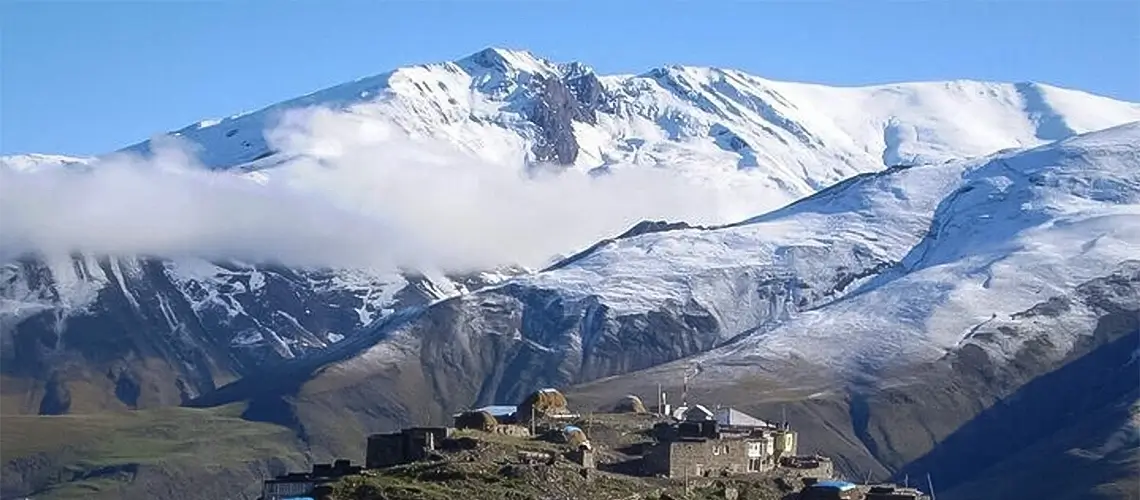Introduction to Guba
Nestled in the foothills of the Greater Caucasus Mountains, Guba is one of Azerbaijan’s most picturesque regions, offering a blend of natural beauty, rich history, and vibrant culture. Located about 170 kilometers north of Baku, Guba is known for its lush forests, stunning landscapes, and diverse cultural heritage. The region is famous for its apple orchards, traditional carpets, and as the gateway to the highlands of northern Azerbaijan.
This Guba travel guide will take you through the must-see attractions, outdoor adventures, and practical travel tips, ensuring you experience the best of what this beautiful region has to offer.BakufireTour
Top Attractions in Guba
1. Afurja Waterfall
One of Guba’s most iconic natural landmarks is the Afurja Waterfall. This stunning waterfall is located in a gorge surrounded by steep cliffs and dense forests, making it a perfect spot for nature lovers and photographers. The waterfall cascades down from a height of 75 meters, creating a breathtaking sight, especially after the spring snowmelt. A short hike through the forest leads you to the base of the waterfall, where you can enjoy the cool mist and the serene surroundings.
Visiting Afurja Waterfall is a must for anyone exploring Guba, as it showcases the region’s natural beauty in its purest form.
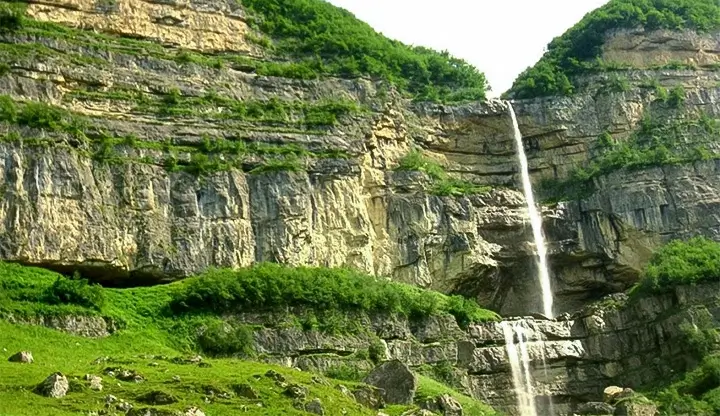
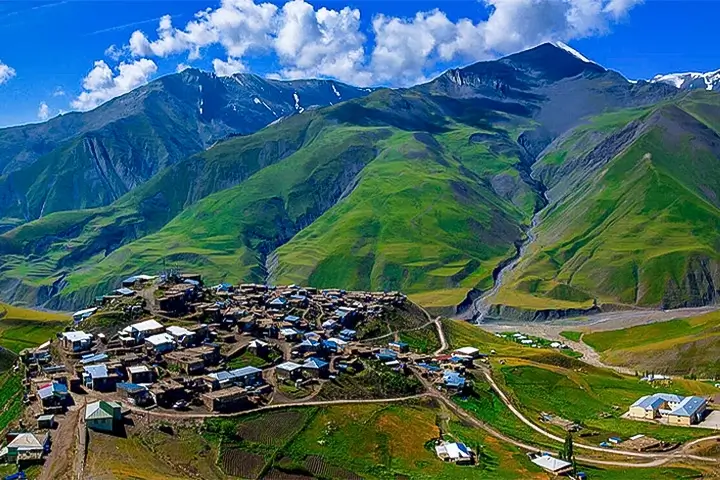
2. Khinalug Village
Perched high in the Caucasus Mountains at an altitude of 2,300 meters, Khinalug (also spelled Xinaliq) is one of the oldest continuously inhabited villages in the world. This ancient mountain village, with a history dating back over 5,000 years, is a living museum of traditional Caucasian life. The village’s stone houses, narrow streets, and panoramic views of the surrounding mountains make it a fascinating destination for history enthusiasts and adventurers alike.
Khinalug is also home to a unique language and culture, preserved by its isolation from the rest of the country. A visit to Khinalug offers a rare opportunity to step back in time and experience the traditional way of life that has been maintained for centuries.
3. Guba Carpet Weaving Factory
Guba is renowned for its traditional carpet weaving, and a visit to the Guba Carpet Weaving Factory provides insight into this ancient craft. The factory is one of the best places in Azerbaijan to see how these exquisite carpets are made, using techniques that have been passed down through generations. Visitors can observe the entire process, from the spinning of the wool to the intricate weaving patterns that make Guba carpets famous.
The factory also has a showroom where you can purchase authentic Guba carpets, making it a perfect place to pick up a unique souvenir from your trip.
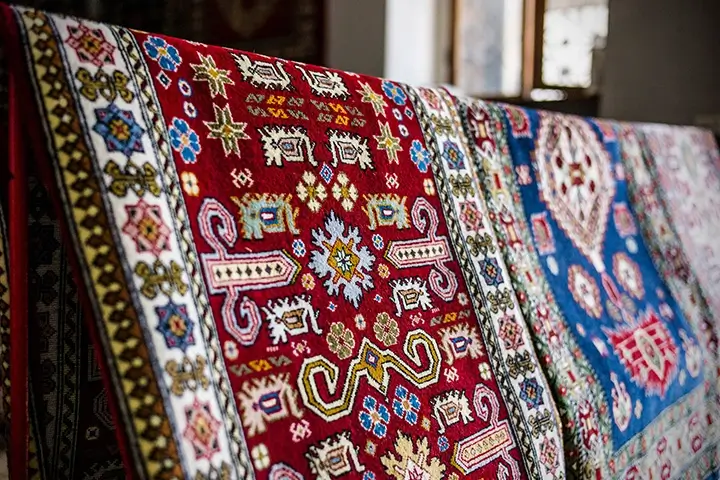
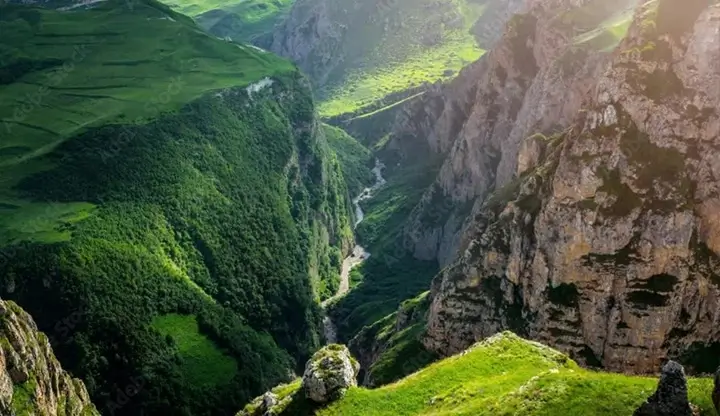
4. Tenghi Canyon
Tenghi Canyon, located near the village of Qechresh, is another natural wonder of the Guba region. The canyon is carved by the Qudyalchay River and features steep cliffs, dense forests, and a series of picturesque waterfalls. The area is a popular spot for hiking, picnicking, and enjoying the serene beauty of nature. The cool, shaded environment of Tenghi Canyon provides a refreshing escape during the hot summer months, making it a favorite destination for locals and tourists alike.
Cultural and Historical Landmarks in Guba
Guba is not only a region of natural beauty but also one of rich cultural heritage. The region’s historical landmarks offer a glimpse into the diverse cultures and peoples that have shaped Guba over the centuries.
1. Guba Genocide Memorial Complex
The Guba Genocide Memorial Complex is a poignant site dedicated to the memory of the victims of the 1918 massacre in Guba. The complex includes a museum that provides detailed information about the events that took place during this tragic period in Azerbaijani history. The site also features a memorial, where visitors can pay their respects to those who lost their lives. The Guba Genocide Memorial Complex serves as an important reminder of the region’s turbulent past and its resilience in the face of adversity.
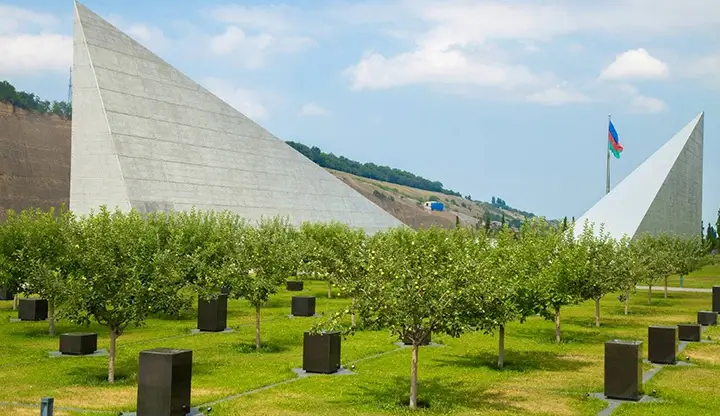
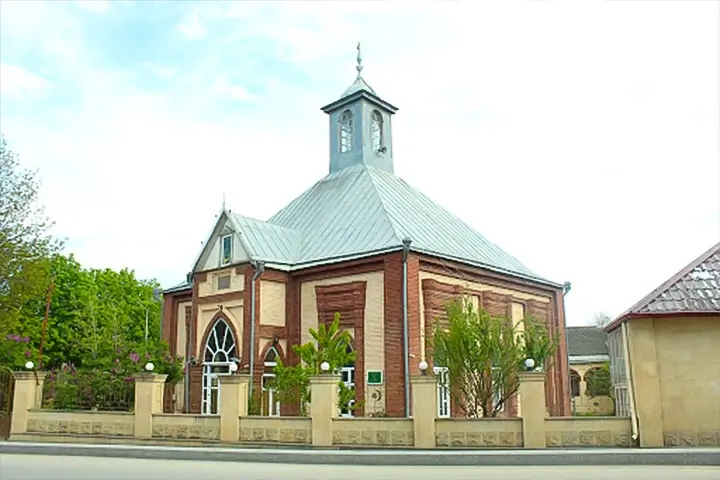
2. Sakina Khanum Mosque
The Sakina Khanum Mosque is one of Guba’s most notable religious landmarks. Built in 1840 by the widow of an influential Guba khan, this mosque is an excellent example of Islamic architecture in Azerbaijan. The mosque’s intricate design and elegant minaret are a testament to the craftsmanship of the time. The interior of the mosque is beautifully decorated, with traditional Azerbaijani patterns and calligraphy. The Sakina Khanum Mosque is not only a place of worship but also a symbol of the region’s cultural and historical significance.
3. Qechresh Village
Qechresh Village, located in the lush forests of Guba, is a popular destination for those looking to experience rural life in Azerbaijan. The village is known for its beautiful landscapes, with towering trees, clear streams, and traditional wooden houses. Qechresh is also famous for its hospitality, with locals often welcoming visitors with tea and homemade sweets. The village is an ideal base for exploring the surrounding natural attractions, including Tenghi Canyon and the nearby waterfalls.
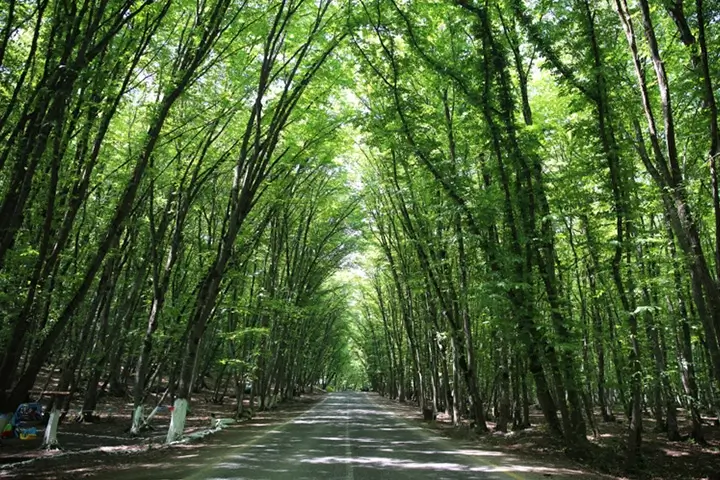
Outdoor Activities and Adventures
Guba’s diverse landscapes make it a perfect destination for outdoor enthusiasts, offering a wide range of activities from hiking and trekking to fishing and bird watching.

Hiking and Trekking
Guba’s mountainous terrain provides excellent opportunities for hiking and trekking. The region is crisscrossed with trails that lead through forests, along rivers, and up to high mountain passes. Popular hiking destinations include Afurja Waterfall, Tenghi Canyon, and the trails around Khinalug Village. Whether you’re a seasoned hiker or just looking for a leisurely walk in nature, Guba’s trails offer something for everyone.
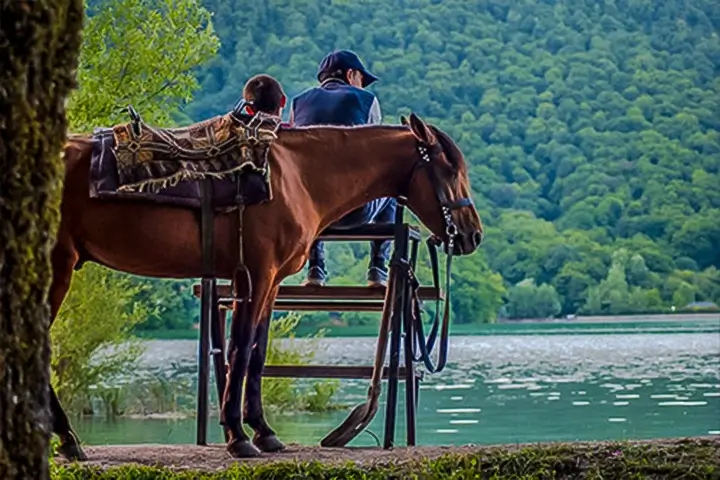
Horseback Riding
Horseback riding is a popular activity in Guba, allowing visitors to explore the region’s stunning landscapes in a unique and traditional way. Several local operators offer guided horseback tours that take you through the forests, meadows, and mountains of Guba. Riding on horseback provides a peaceful and immersive way to experience the natural beauty of the area, and is a great way to connect with the region’s rural culture.
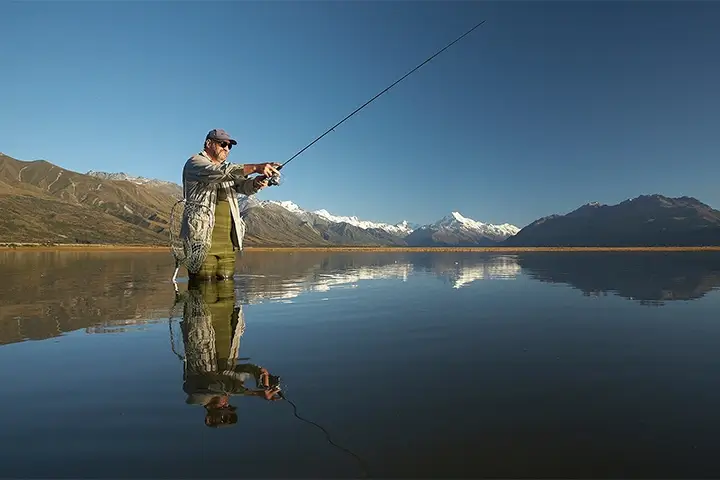
Fishing and Picnicking
The rivers and streams of Guba are perfect for fishing, with plenty of spots to catch trout and other freshwater fish. Fishing is a popular pastime among locals, and visitors can join in by renting fishing equipment from local operators. After a morning of fishing, there’s nothing better than enjoying a picnic by the water, surrounded by the tranquil beauty of Guba’s natural landscapes. Many of the region’s parks and natural areas have designated picnic spots, making it easy to spend a relaxing day in nature.
Cuisine of Guba
Guba’s culinary scene is a delicious blend of traditional Azerbaijani flavors and local specialties. The region is particularly famous for its apples, which are used in a variety of dishes, from savory stews to sweet desserts.
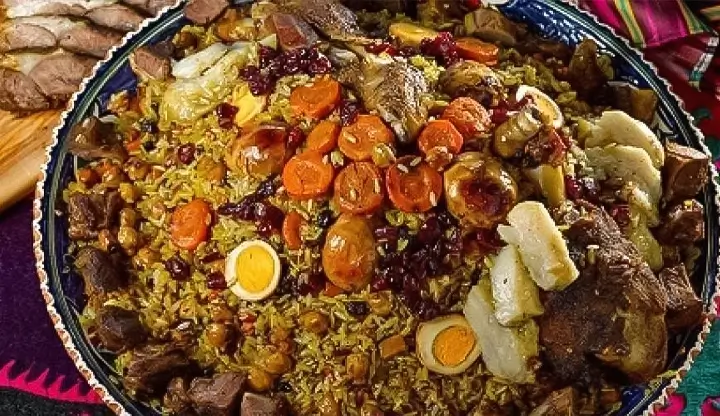
Must-Try Dishes
- Levengi: A traditional Azerbaijani dish made with chicken or fish stuffed with a mixture of walnuts, onions, and spices. Levengi is a popular dish in Guba, often served with rice and fresh herbs.
- Qutab: A savory pancake filled with a variety of ingredients, such as greens, cheese, or meat. Qutab is a popular snack in Guba, often enjoyed with a dollop of yogurt or sour cream.
- Shor Gogal: A savory pastry filled with spiced butter and often served during special occasions. Shor Gogal is a traditional treat in Guba, perfect for enjoying with a cup of Azerbaijani tea.
Where to Eat in Guba
Guba offers a variety of dining options, from cozy cafes to traditional restaurants. Many of the region’s eateries focus on using fresh, locally sourced ingredients to create authentic Azerbaijani dishes. Popular dining spots include the Guba Palace Restaurant, which offers a range of traditional dishes in an elegant setting, and the Qechresh Forest Restaurant, where you can enjoy a meal surrounded by the natural beauty of the forest.
Day Trips from Guba
Guba’s location in northern Azerbaijan makes it an ideal base for exploring the surrounding region. Several day trips can be taken from Guba to discover more of Azerbaijan’s natural and historical attractions.

1. Quba Mosque (Quba City Mosque)
Located in the center of Guba city, the Quba Mosque is one of the most important religious sites in the region. The mosque’s striking red-brick architecture and ornate interior make it a must-see for visitors to Guba. The mosque is also an important community center, hosting religious and cultural events throughout the year.
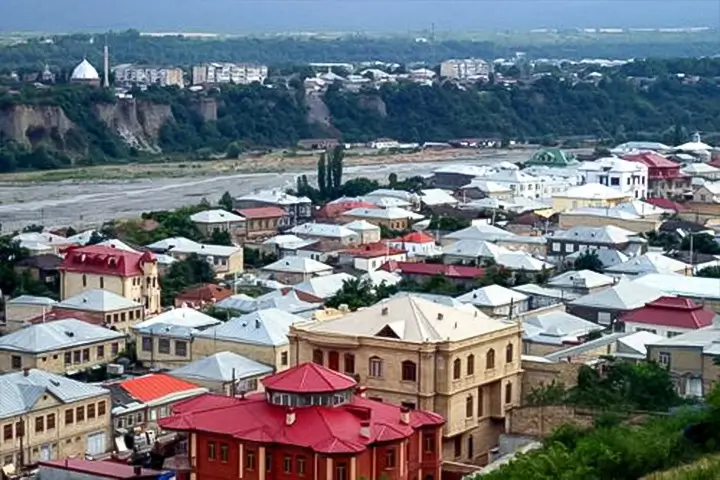
2. Krasnaya Sloboda (Red Settlement)
Krasnaya Sloboda, also known as Red Settlement, is a unique Jewish village located just across the river from Guba. This village is home to one of the largest communities of Mountain Jews in Azerbaijan, and its well-preserved synagogues and traditional houses offer a fascinating glimpse into the life and culture of this community. A visit to Krasnaya Sloboda provides a deeper understanding of the diverse cultural heritage of the Guba region.
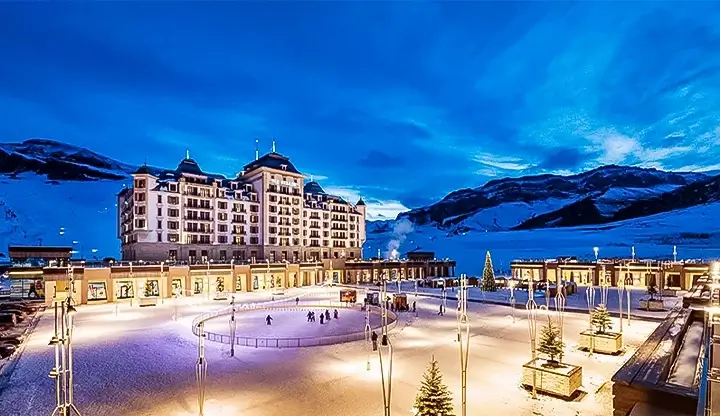
3. Shahdag Mountain Resort
Shahdag Mountain Resort, located about an hour’s drive from Guba, is Azerbaijan’s premier winter sports destination. The resort offers a range of activities, from skiing and snowboarding in the winter to hiking and mountain biking in the summer. With its modern facilities and stunning mountain views, Shahdag is a great place to experience the natural beauty of Azerbaijan’s highlands.
Practical Travel Information
How to Get to Guba
Guba is easily accessible from Baku by car or bus. The journey takes approximately two to three hours, depending on traffic and weather conditions. There are several daily bus services from Baku to Guba, departing from the Baku International Bus Terminal. For those who prefer to drive, the road to Guba is well-maintained, offering scenic views of the Azerbaijani countryside along the way.
Where to Stay in Guba
Guba offers a range of accommodation options, from luxury hotels to cozy guesthouses. The Qechresh Forest Resort is a popular choice for those looking to stay in a natural setting, while the Guba Palace Hotel offers modern amenities and stunning views of the surrounding mountains. For a more authentic experience, consider staying in a traditional guesthouse in one of the nearby villages, where you can enjoy local hospitality and home-cooked meals.
Best Time to Visit Guba
The best time to visit Guba is during the spring (April to June) and autumn (September to November) when the weather is mild and the landscapes are at their most vibrant. Summer is also a popular time to visit, especially for those looking to escape the heat of Baku and enjoy the cooler temperatures of the mountains. Winter brings snow to the higher elevations, making it an ideal time for winter sports enthusiasts to visit the nearby Shahdag Mountain Resort.
Conclusion
Guba is a destination that offers something for everyone, from the stunning natural landscapes of the Caucasus Mountains to the rich cultural heritage of its villages and towns. Whether you’re hiking to a remote waterfall, exploring ancient mountain villages, or simply enjoying a traditional Azerbaijani meal, Guba promises an unforgettable travel experience in one of Azerbaijan’s most beautiful regions.
